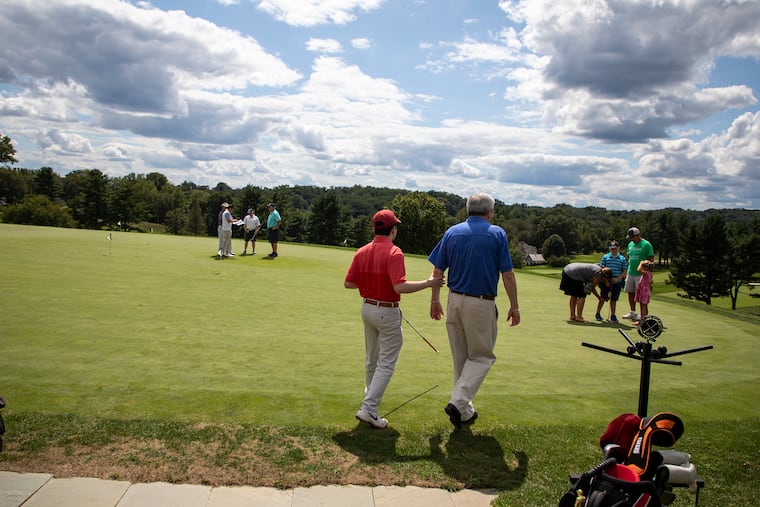Golfers hope actions by other states might mean the sport’s return is closer in Pa. and N.J.
The two states were among just 12 states as of Tuesday to totally ban golf.

As area golfers point their range finders toward an uncertain future, some hope that Pennsylvania and New Jersey may fall in line with other states in lifting the pandemic-driven ban on the sport.
According to a survey by the Golf Course Superintendents Association of America, the two states were among just 12 as of Tuesday to ban golf. Meanwhile, the National Golf Federation estimates that 47% of the nation’s more than 15,000 courses were open and that 12 states had either liberalized or lifted bans during the last week.
Minnesota and Wisconsin are to reopen their courses this week. Delaware already permits golf. Even New York, the state hardest hit by the COVID-19 virus, now allows limited play. An executive order from New York Gov. Andrew Cuomo stated that private operators in the state may open “so long as there are no gatherings of any kind and appropriate social-distancing of six feet between individuals is strictly abided.”
On Monday, Gov. Tom Wolf made no mention of the sport when he eased some Pennsylvania restrictions. While extending his stay-at-home order through May 8, Wolf said online auto sales and curbside liquor pickup at State Stores would now be permitted. Construction projects can resume on that date, as well.
Just before Wolf’s announcement, a group of Pennsylvania golf organizations had written him to urge a relaxation of the ban that has shuttered the state’s 800 courses since late March.
“We request that when we reach the deadline of the Stay-At-Home Order on April 30 that golf be included among those activities that are allowable,” read a letter from the Pennsylvania Golf Alliance, a loose confederation of organizations that includes the Golf Association of Philadelphia and the Pennsylvania Golf Association.
Their letter cited several steps that would be instituted when the courses reopened, including limiting use to one golfer per cart, expanding the interim between tee times, and converting food sales into curbside service.
Also on Monday, two New Jersey lawmakers, State Sen. Steve Oroho and Assemblyman Hal Wirths, who represent a suburban district in the northwestern corner of the state, asked Gov. Phil Murphy to reopen courses there.
These prohibitions, coming at the unofficial start of the golfing season, have likely created considerable pent-up demand. That and the fact that so many workers here have lost their jobs during the pandemic and presumably would have more time to play could create a rush when the courses reopen.
When Minnesota announced it would again allow golf, one public course booked 213 golfers in 43 minutes, according to the Minneapolis Star Tribune.
In addition to Pennsylvania and New Jersey, the states where golf is banned are Illinois, Maine, Maryland, Massachusetts, Michigan, Nevada, New Hampshire, New Mexico, Vermont, and Washington.
Some states have left it up to local decision. In California, for example, golf is permitted in two of its 58 counties. In Florida, every county but two allows it.
Many Pennsylvania golfers have complained that although Wolf has shut down their sport, he’s allowed fishing.
“The Fish and Boat Commission made the decision to open trout season, I think, early,” Wolf said recently. “And the idea was that that’s something people can do individually, unlike golf, where you might have to go and pick up your cards and maybe actually congregate with other people.”